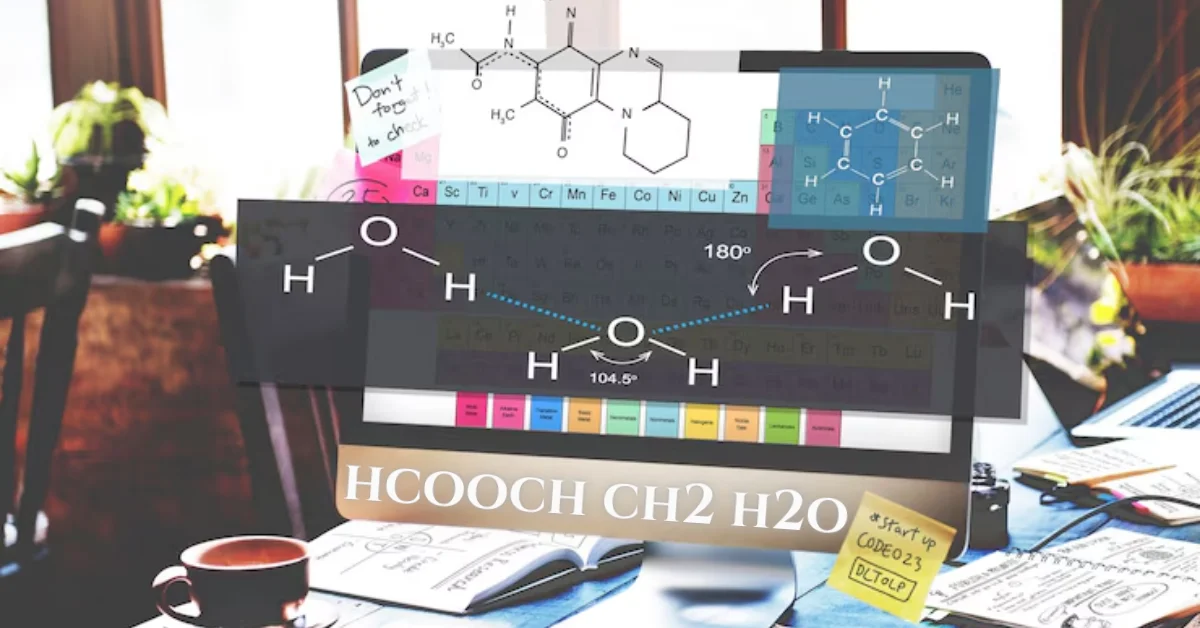Introduction: What is hcooch ch2 h2o?
hcooch ch2 h2o might look like a complicated chemical formula, but it’s a powerful and versatile compound with widespread applications. Known in scientific terms as formylmethanol or formate ethylene glycol, this compound plays a hidden but essential role in industries, products, and even our daily lives.
Let’s break down its story, chemical structure, real-world uses, and future possibilities.
The History and Discovery of hcooch ch2 h2o
- Discovered in the late 19th century
- Originated from research on formate esters during experiments involving methanol and formic acid
- Scientists identified unique interactions and reactivity, sparking more in-depth research
- Evolved from lab curiosity to industrial staple as analytical chemistry advanced
Chemical Structure and Properties
1. Composition and Formula
- Molecular formula: hcooch ch2 h2o
- Alternate name: Formylmethanol
- Combines formic acid, methylene group, and water components
2. Key Properties
- Appearance: Colorless liquid
- Odor: Mild and sweet
- Polarity: High; capable of hydrogen bonding
- Solubility: Highly soluble in water and polar solvents
- Reactivity: Engages in hydrogen bonding and acts as an intermediate in various reactions
Industrial Applications of hcooch ch2 h2o
This compound proves its value across several sectors due to its multifunctional nature:
1. Textile and Leather Processing
- Enhances dye absorption
- Acts as a pH regulator
- Improves colorfastness in fabrics
2. Agriculture
- Incorporated in herbicides and pesticides
- Improves formulation stability and effectiveness
3. Food Industry
- Functions as a preservative
- Has antimicrobial properties that extend shelf life
4. Pharmaceuticals
- Used as a chemical intermediate
- Helps in synthesizing active pharmaceutical ingredients (APIs)
Everyday Uses of hcooch ch2 h2o
You may not notice it, but this molecule is quietly at work in many household items:
1. Personal Care Products
- Found in moisturizers and lotions
- Helps retain skin hydration
2. Cleaning Agents
- Works as a solvent in surface and glass cleaners
- Helps dissolve oils and grime efficiently
3. Food Additives
- Improves texture and flavor
- Stabilizes processed food formulations
4. Textile Treatments
- Used in fabric softeners and durability enhancers
Environmental Impact
1. Sustainability and Green Chemistry
- Can be synthesized using renewable resources
- Potentially reduces dependence on more harmful petrochemicals
2. Environmental Concerns
- Improper production can lead to waste and emissions
- Must be handled with eco-conscious manufacturing techniques
3. Low Toxicity Profile
- Safer alternative to many industrial solvents
- Reduces risk to human health and the environment
Future Potential and Innovations
hcooch ch2 h2o is being explored for even more innovative uses:
1. Biofuel Industry
- May serve as a cleaner, renewable fuel component
2. Drug Delivery Systems
- Enhances the bioavailability and targeted delivery of medications
3. Biodegradable Plastics
- Promising base compound for producing eco-friendly materials
4. Emerging Technologies
- Research is exploring its use in nanotechnology and green catalysis
Conclusion
hcooch ch2 h2o isn’t just a bunch of letters and numbers—it’s a chemical with meaningful contributions to our everyday lives and industries. From improving the clothes we wear to playing a part in cutting-edge drug development, its significance is expanding as science progresses.
Understanding this compound opens the door to smarter, cleaner, and more sustainable innovations that benefit both industry and the planet.
FAQs
Is hcooch ch2 h2o safe to use in household products?
Yes, when used in regulated concentrations, it is considered safe and commonly found in skincare and cleaning agents.
Can hcooch chi2 h2o be used in organic farming?
Yes, it is sometimes utilized in eco-friendly pesticide formulations due to its relatively low toxicity.
How does hcooch ch2 h2o compare to other solvents?
It is often safer and more biodegradable than traditional petrochemical solvents, making it an appealing alternative.
What industries benefit the most from this compound?
Textile, agriculture, food processing, personal care, and pharmaceuticals are the main beneficiaries.
Is research on hcooch ch2 h2o ongoing?
Absolutely. Researchers continue to explore new uses in energy, drug delivery, and sustainable material development.

